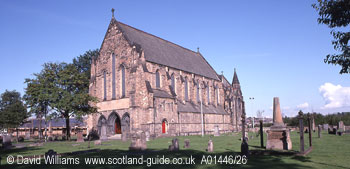Govan is one of Glasgow`s oldest districts and can trace its history back to the sixth century. In 1134 David I gave the lands of Govan to the church in Glasgow and the village developed around the important religious site now occupied by Govan Old Parish Church. It later prospered as an agricultural centre serving the needs of Glasgow, and its important trading links were assisted by the fact that the River Clyde could be forded here.
By the sixteenth century, Bishop Leslie was impressed enough by Govan to describe it as `a gret and ane large village upon the water of Clyd named Govan whare ale is wondrous guid`. In 1793 there were 224 families in Govan, with many of them involved in handloom weaving; thirty years later the local mines were producing enough coal to fill three hundred trading vessels a year. But the big changes were just around the corner as the first shipyards were built around the 1840s and by 1864 the population had risen to 9000. That year Govan gained the status of a burgh but by 1912, when its population had dramatically increased to 91,000, it lost its autonomy as it was swallowed up by Glasgow.
This article is based on the guidebook "The Glasgow Guide".

Govan Old Parish Church was built in 1883-8 on a well-established ecclesiastical site right beside the shipyards. The new-found wealth coming into Govan allowed the local people to build an elaborate church, and decorate it with a wonderful set of stained-glass windows.